Sanforized vs Unsanforized vs Raw: How to Pick Your Selvedge Jeans
Denim traces its origins back to France and the development of a kind of twill called ‘serge de Nimes.’ But the cultural icon that blue jeans have become is widely credited to Levi Strauss back in 1870s San Francisco. Back then, “Levi’s” were marketed as “shrink to fit,” meaning just that: you bought them a size or too large and they shrunk to the size you wanted after the first wash.
This, ladies and gentlemen, was unsanforized denim, also known as “loom state” because that’s how it came right off the loom: no washing, no pre-shrinking, just cotton in its original state.
Blue jeans were invented in the 1870s, but sanforization was invented in 1928, with Levi’s adopting it in the 1960s. All of a sudden, jeans were no longer “shrink to fit.” So what happened to them?
And why would so many people prefer still jeans the old fashioned, unsanforized way?
I was grossly under-informed about this process so I enlisted denim historian, consultant, and designer Mohsin Sajid to help untangle the complicated details of sanforization.
Sanforized vs Unsanforized denim explained
- Sanforization is a process that pre-shrinks denim (or any other textile)
- The process uses steam, water, and (less often) chemicals to do so
Sanforized denim has undergone the sanforization process, and it’s more often called “pre-shrunk denim.”
According to Mohsin, “it’s basically a way of treating fabric mostly cotton-based garments or for fabrics that basically kind of shrinks it lines the fabric and it gets rid of most of the shrinkage and it’s still raw”
Denim that hasn’t been through the sanforization process is known as unsanforized, “loom state,” or “shrink to fit,” as that will happen after its first wash.
In reality, very few jeans are completely unsanforized, including the modern-day Levi’s shrink-to-fits, which actually do undergo just a touch of sanforization.
The video, below, is what a sanforizing machine looks like, “they get the fabric and they put it through a massive sanforization machine, this machine is bigger than a football pitch it’s really really large.”
Sometimes, sanforizing is done with chemicals instead of water, and more modern, eco-friendly processes draw water from the air to complete the process, using some 99 percent less water than the traditional, not-especially-environmentally-friendly method.
“[Sanforization] is different chemical processes. There are also machines that other companies have invented that do it with ozone technology. So, you use water from the air to treat to treat the fabric. There are ways of doing it with hardly no water. So now, there are newer types of technologies that don’t use large amounts of water.”
[Related: 7 Reasons People Love Japanese Denim]
Why buy sanforized denim?
Sanforized denim solves a few inherent “problems” with unfinished denim, or at least, what much of the market considers to be problems.
- Sanforizing vastly reduces shrinkage. If your jeans are unsanforized, they’ll shrink anywhere from 2 to 10 percent on the first wash, making figuring out your size extremely difficult.
- Sanforizing smooths out the denim. The unsanforized stuff tends to be rougher and stiffer.
“Nowadays most brands use some sanforized fabric because they want their side seams to remain straight,” Mohsin says, “I know if someone else was buying a pair of jeans they would get very irritated after the first wash it shrinks by three inches. They would actually be annoyed. They’ll think it’s a fault in the fabric. It’s the brand. They’ll probably complain about it.”
Mohsin explained skewing as:
“If you’ve ever had a graphic t-shirt and overtime the graphic kind of moves, that’s skewing, it all relates to how the cotton has been spun. You find it on early denim styles that are unsanforized. And us denim heads we love that, we love skewing. most people don’t it has to be dead straight.”
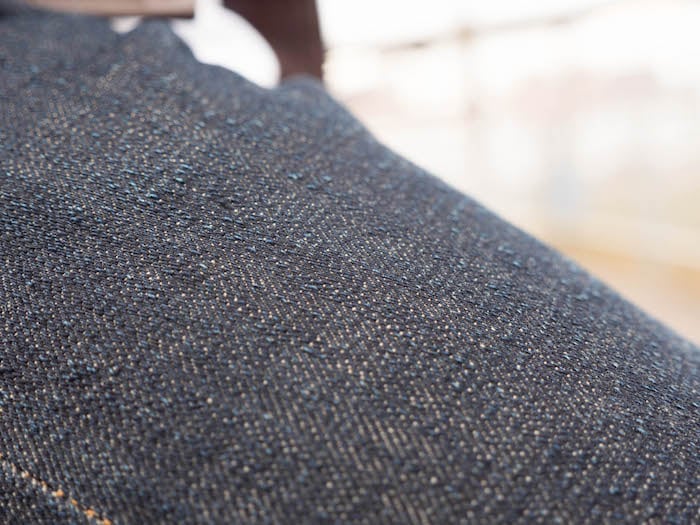
Why buy unsanforized denim?
So why are so many guys attracted to unsanforized jeans?
- Unsanforized denim is more “traditional.” Many guys, particularly those in the heritage fashion community, simply like wearing clothes made the old fashioned way.
- Unsanforized denim is rougher, stiffer, more coarse, and oftentimes, the “hair” on fuzzier denims is singed off during the process. Guys who like their jeans to have “character” prefer it like this.
- Unsanforized jeans have more “leg twist.” As this kind of jean wears in, the denim tends to “twist” around the leg, making the side seam wrap around your thigh and calf. It’s inconsequential for comfort and durability, but some denimheads absolutely love this.
- Unsanforized jeans might fit better. This is controversial and many people dispute it, but there is a belief that because it’s less processed, unsanforized jeans do a better job of molding to the wearer’s body type. Believers buy them oversized, wear them for a while so that they conform to our individual nooks and crannies, then soak or wash them.
Despite all of these potential advantages, it’s still very difficult to get the right size with the unsanforized stuff and the vast, vast majority of customers have no patience to tend to their shrinking and stretching jeans, so only a tiny percentage of jeans sold are actually unsanforized.
“I personally like it when it’s unsanforized so I love it when it shrinks.” says Mohsin, “I love it when all the skewing happens me personally as a designer I love that.”
The benefits of unsanforized denim are all related to this idea of wanting authentic, unique fabric,
“If you go back to the 30s and 40s everything was made like that. Being a denim designer and a historian who looks at old garments and I go, ‘Oh! I love that garment. Oh! I love that pocket, how it’s warped and everything about it’s twisted. It’s hard to recreate that. Sometimes you have to go back and use fabrics that do [warp and twist] rather than engineering your pattern to twist”
Most consumers don’t want this, but buying raw, unsanforized denim is a hobby. It’s like collecting old cars or old computers. It’s the combination of history, engineering, and style that makes it a fun hobby. Mohsin sums it up as,
I’m one of these people that loves when things shrink. So I love it when you get puckering around the pocket.I love it also — you know this might be frowned upon —I like it when the side seams start to twist and the inseam starts twisting.
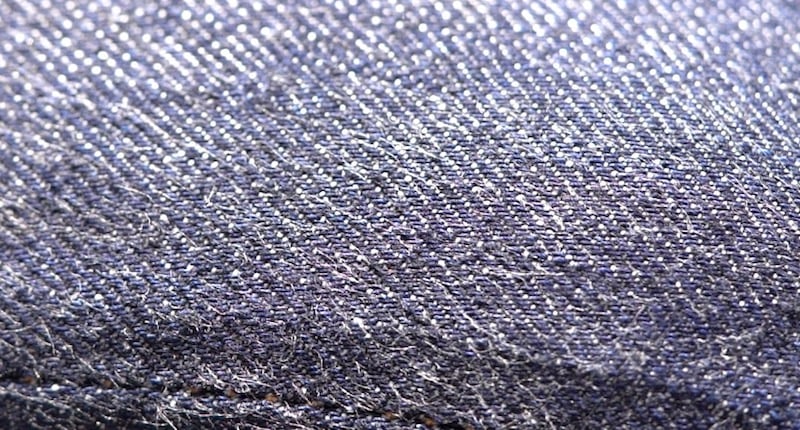
Sanforized vs Raw Denim
Many, many people confuse these two terms and while they often overlap, they’re not the same.
We’ve covered what “sanforized” means, but raw denim means that the jeans haven’t been washed. They may have been sanforized, and in all likelihood, they have. Sanforized raw denim exists: it’s skipped the heating/steaming at the factory, but it did get a wash. This would have reduced some of the shrinkage (2 or 3 percent), but they’ll still shrink some more when you wash or soak them.
“Raw, in the denim world, means unwashed. Unwashed is still not washing. One one wash means it’s been rinsed, so they probably added water with it. They probably added softener with it to make it more softer and then they’ve ironed it and they pressed it. That makes it not raw. It’s not raw but you can still break it in. A raw jacket in it’s loom state means it’s directly off the roll.”
Sanforization and Shrinkage
As a general rule, a pair of jeans made from sanforized denim will shrink by around two or three percent on the first wash.
Mohsin recommends, “If you’re doing this whole raw denim journey buy slightly bigger.”
On the other hand, unsanforized denim will shrink by up to ten percent on the first wash. Most of this shrinkage will be in the legs after its first soak, since these are comparatively longer than the waist band. This shrinkage could be as much as one or two sizes’ difference!
If you plan to go with unsanforized denim, be on the lookout for these 5 common rookie mistakes buyers of raw denim jeans make.
[More denim history: Were Jeans Really Banned In the Soviet Union?]
How do they sanforize denim?
While Levi Strauss and his rivals wrestled with denim’s tendency to shrink, the problem was largely solved by the late 1920s. That was when, finally, American inventor and entrepreneur Sanford L Cluett came up with a solution. His sanforization process was effectively a process to compact woven fabrics like denim.
Before his process came along, an unsanforized pair of jeans was all that was on offer to the consumer. Shrink to fit denim was the order of the day, whether you liked it or not, regardless of the brand you picked — and the same applied to other fabrics.
Mohsin explains,
“It does it with heat rollers. It does it with steam. There’s many different processes but the sanforization process has been patented and many people do it now. But it’s mostly through heat rollers. They do slightly dampen the fabric and they stretch and they steam it really quickly and they iron it again.”
This new process involves feeding the fabric between hot rollers. The unsanforized textile is placed on a conveyor belt at the mill and moistened, typically by steam, rather than being given a soak in a bath. The moisture helps to lubricate the fibers of the denim and pump primes shrinkage.
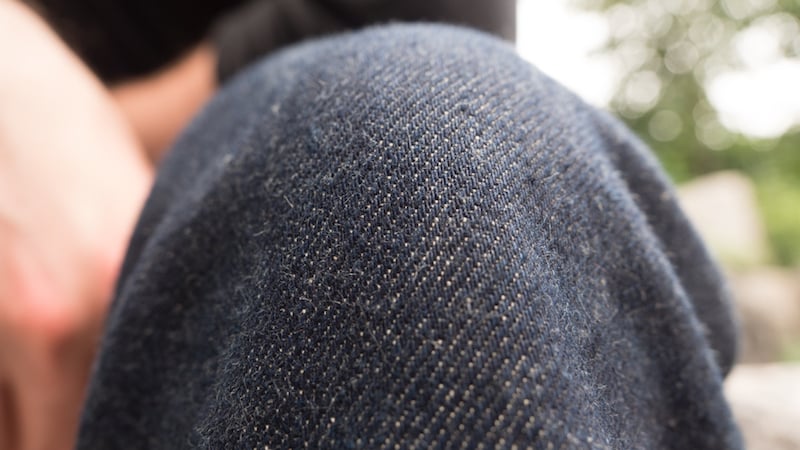
‘Washed’ and stretched
Washing jeans and sanforizing is different. It’s different because when you wash at home, some people do cold washes, some people do 30 degrees 40 degrees. The temperatures completely change the fabric. Every fabric that’s produced is done on a certain loom. It’s done with a certain type of indigo. You don’t know where the cotton has come from there are so many variables in the world of denim”
The fabric is both stretched and compressed during the process.
After the denim is stretched, the sanforization machine returns the denim to its right size and texture as the warp yarns shrink, and the weft yarns are compressed closely together. The sanforized denim is then placed in a dryer for a certain amount of time to ensure the cotton fibers remain locked in their current texture. Most mills will do this on-site, before the jeans hit the stores. It is a fully automated process that only requires humans to press “enter.”
Sanforization leads to more precise sizing compared to unsanforized selvedge denim jeans after their first fabric wash in your washing machine.
In many ways, sanforized jeans and their ready-made shrinkage are what has helped denim become the global success story it has become for generations. However, while this shrinkage has done a lot to popularize jeans, there are fans of unsanforized denim whose preference remains unaltered to this day. Despite new releases from brands all the time, the unsanforized denimhead will continue to prefer sizing their jeans themselves for that exact reason. Even if this means getting soaked in the bath to ensure their jeans fit their body perfectly. To some, the first wash is a rite they have to perform every time they buy new blue denim.
[Related: The History of the Denim Jacket]
Final thoughts
The question of sanforized vs unsanforized denim is not easy to answer. There are pros and cons to each camp which, in the end, come down to personal preference. To first wash or not to first wash, that is indeed the question. Do you even have the time or inclination to soak in the bath wearing your denims? Many consumers just want pants that fit and aren’t all that interested in their treatment.
Whether you like DIY finishing is a subjective idea. What is not open for debate, though, is that sanforized denim has made shopping for casual wear clothing a whole lot easier. And if Levi Strauss were still around, we are quietly confident he would think the same.
A big thanks to Mohsin Sajid for patiently explaining this very complex topic. You can get more denim history from Mohsin at his denim history Instagram account. If you want to get into the raw denim scene check out his brand Endrime.
Frequently Asked Questions
Is denim the only fabric that gets sanforized?
No, the process is used for a range of fabrics to prevent the material from shrinking when it gets washed.
How can I tell if my denim is sanforized?
If the jeans are labeled 'unsanforized' or 'loomstate,' it's unsanforized. 'Raw' doesn't necessarily mean unsanforized. Other indicators are that unsanforized denim is typically stiffer and rougher, with many considering it to have more 'character.'
Is raw denim sanforized?
Usually. Raw denim refers to denim that is unwashed and untreated, and while it's usually unsanforized, this isn't always the case. You can sanforize raw denim with heat, steam, or chemicals in order to reduce shrinkage, but as it hasn't been washed, it's still considered raw.
What does unsanforized mean?
Sanforization is a process that shrinks material (not just denim) with steam, water, and/or chemicals. Unsanforized denim will shrink 3 to 10% on its first wash, so sanforized denim is easier to size, though some find unsanforized denim to have more character, despite being rougher and stiffer.
How do you shrink unsanforized denim?
One typically submerges the jeans in water for 30 to 60 minutes, which shrinks it from 3 to 10%. The hotter the water, the greater the shrinkage, but don't use anything hotter than hot tap water. (ie. don't boil anything.) .
Is unsanforized denim better?
It's entirely subjective. Sanforized denim won't shrink in the wash so it's easier to size at the outset, plus it's typically smoother and softer. Some prefer unsanforized denim because it's rougher, stiffer, and hairier — it has more character,' if that's your thing.


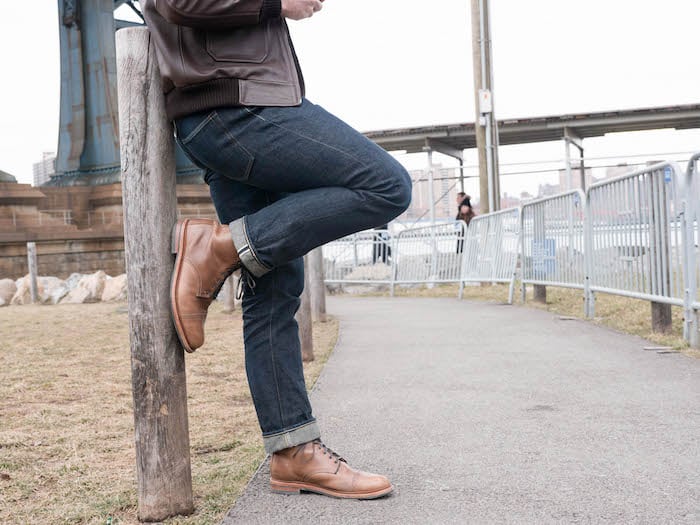

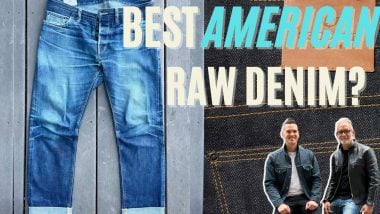
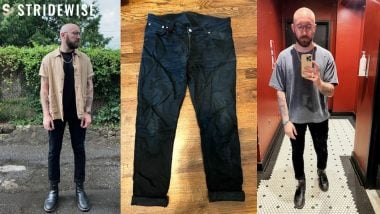






Join the Discussion